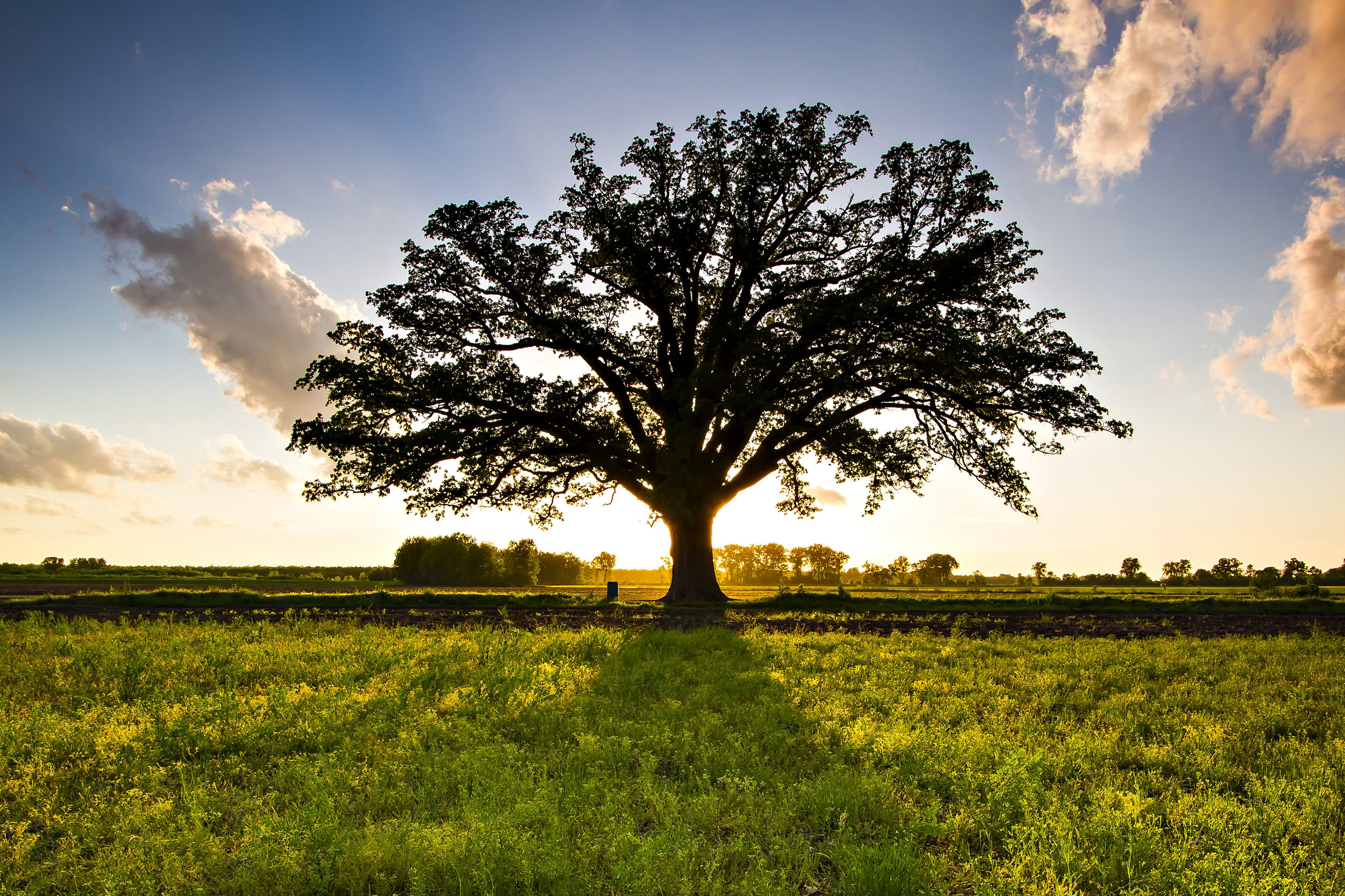The Mighty Bur Oak
by Walter Reins
Bur Oak Leaves
Few species of trees have such a universally recognized name as the Oak. Worldwide, there are some 600 species of Oaks, and in Ohio alone we have over a dozen. Here in Columbus, they tower over the homes of Clintonville, line the streets of Upper Arlington, and bathe the yards of Bexley with their shade. Oaks in Ohio can be divided into two groups - Red Oaks and White Oaks. Many of the large Oaks we see throughout the city in urban landscapes are of the Red Oak group. Less commonly planted are Oaks in the White Oak group, of which the Bur Oak belongs. Let’s take a closer look at this under-utilized tree that is native to most parts of our state.
The Bur Oak, sometimes spelled Burr Oak and alternatively named the Mossycup Oak, is a large shade tree at maturity, growing to 80 feet or more in height and spread. For this reason, the proper siting of this tree in the urban landscape is essential. There’s an old saying, “A society grows great when old men plant trees in whose shade they know they shall never sit.” I think it’s equally true to say that a property grows in beauty and value when it’s owner plants trees with consideration for a mature size that he/she will likely never see. Bur Oaks get BIG. They also have one of the largest acorns of the Oaks, another consideration when deciding where to plant.
Chlorosis in a Pin Oak in Bexley, Ohio
One of the characteristics that I love about this tree is that it tolerates, and even prefers, slightly alkaline soils. A common problem we as arborists see in landscapes everyday throughout Central Ohio is chlorosis, or yellowing of tree leaves due to nutrient deficiencies, which leads to slow decline and potential death of a tree. Because we tend to have higher pH levels, certain micronutrients, although present in the soil, become less available for uptake by plants, and some trees are more sensitive to this. We often see this in Oaks of the Red Oak group like Red Oak and Pin Oak, two very common landscape trees. Because a higher pH level of the soil isn’t an issue for Bur Oaks, they typically avoid the problem of chlorosis.
Another notable characteristic of Bur Oaks is that they do exceptionally well on their own. In their native habitat, Bur Oaks are often found growing in a more open area where they develop large, strong lateral limbs. One reason this may occur is because of their ability to grow in adverse conditions that other trees won’t tolerate. This makes them suitable for the urban landscape where we often plant large shade trees as stand-alone additions in the yard.
Last but not least, because the Bur Oak is a member of the White Oak group it tends to be less susceptible to Oak Wilt. Oak Wilt is a vascular disease caused by a fungus, and can lead to the decline and death of otherwise healthy Oak trees. Because of its continued spread, it is unfortunately something we’re now having to take into consideration with how we care for Oak trees in Central Ohio. Considering a Bur Oak or other White Oak species for your landscape is a simple step towards reducing the prevalence of this disease.
The Bur Oak might just be the perfect shade tree for less than perfect conditions. Consider this quick list of pros and cons in deciding whether it’s the right tree for your landscape:
The BIG Bur Oak Acorns
Large size, long-lived, and a dominant landscape feature at maturity, not appropriate for small yards
Beautiful, majestic habit when mature
Tolerant of soil conditions that adversely affect some common species of Oak, notably high soil pH
Less susceptible to Oak Wilt, a disease of growing concern in Central Ohio
Large fruit (acorns) that may not be preferred near driveways or over a home
Does not transplant as well, so it’s sometimes hard to find at nurseries and garden centers
Walter Reins | Regional Manager, Russell Tree Experts
Walter has been an ISA Certified Arborist since 2003. He graduated from Montgomery College in Maryland with a degree in Landscape Horticulture, and has called Columbus, OH his home for nearly 20 years. Walter appreciates trees for their majesty and the critical role they play in our world.





